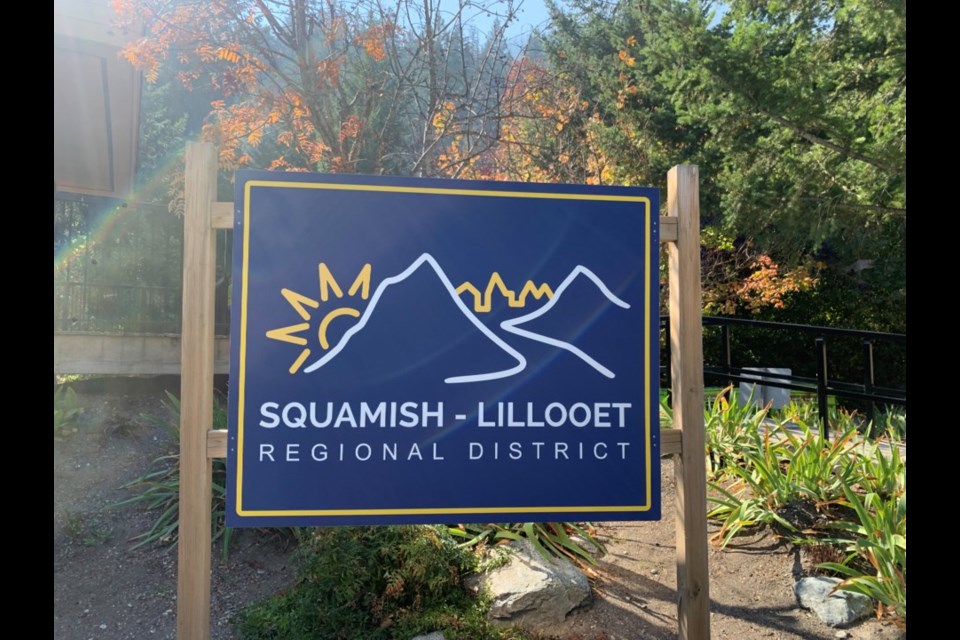A permit has been granted by the Squamish-Lillooet Regional District (SLRD) for three years to construct a multi-use soil processing facility adjacent to Highway 99.
Proponent Cameron Chalmers, on behalf of Tiger Bay Development Corporation (Tiger Bay), was granted the temporary use permit (TUP) to construct a soil processing facility near Britannia Beach in, at a board of directors meeting on March 26.
The 1.2 hectare site was previously used for gravel extraction.
Tiger Bay is slated to develop, the large commercial development consisting of affordable housing, a surf park, and amenities.
The site will host soil stockpiling and blending, and rock and gravel processing. Whilst there will be portable equipment such as bulldozers and excavators, there are no permanent structures proposed for the site.
The report to the board said that the soil will be moved to and from the site in dump trucks using the intersection at Highway 99 at the north portion of the site.
The traffic generated is expected to be 20 trucks per day during normal operations.
Key Conditions
Remediation service is set to manage and monitor the quality of the earthen materials before their arrival, with records made available to the SLRD.
Materials to be used will exclude invasive and hazardous species, such as compost.
Other proposed precautionary measures or key conditions for the facility will include the installation of a pipe system to collect and filter storm water, dust mitigation via road watering, and adhering to noise by-laws via sound barriers, operating within variable optimal hours, in turn ensuring minimal impact of traffic congestion.
In terms of other regional impacts, the report notes that the facility âmay support the construction industry in the region. The proximity of the soil processing facility is expected to speed up travel times to construction times in the region.â
The SLRD board first met in December last year to discuss these conditions, including information on soil contamination and invasive species. A public information meeting then took place in February.
Amendments to the siteâs key conditions were discussed at the recent meeting.
At the March 26 meeting, Anna Koterniak, planner and analyst for SLRD, reaffirmed the consistent quality monitoring and assurance of earthen materials: âWe are not regulating where the soil would come and go from, as long as it's a safe source,â Koterniak said.
A potential amendment to the exclusion of hazardous materials was also discussed, specifically acid rock, but this motion was dropped as it was asserted that acid rock is not typically found in topsoil, and therefore did not render the soil processing moot or the soil itself contaminated:
âThey've already agreed to do that level of inspection on [truck] loads coming in, and so I don't think it adds any additional burden than what's expected,â staff said.
The staff member also emphasized that whilst the site would provide topsoil for on-site developments, it will not be designed as a retailer: â[The topsoil is] for a temporary, commercial soil and aggregate processing facility. It's not meant to be a sale facility,â they said.
The motion for the TUP was passed with the support of the board, with the exception of director and Squamish councillor Chris Pettingill, who opposed it.
âI guess I'm trying to align what our vision is in terms of the OCP (Official Community Plan) and regional growth strategy,â Pettingill said at the meeting. âWe seem to be jumping all over the place in terms of uses, and we're moving on all different directions. Like, how do we sort of reconcile that?â
Board staff said that the OCPâs proposal for resource extraction, not only aligns with the siteâs current zoning and OCP designation, but would start on the opposite end to where residential construction would eventually take place: âProvided that the zoning [is established] by the time they build the start of that site, the TUP would likely be expired, and the construction of the site can coexist,â staff said.
Pettingill remained unconvinced.
â[From] the amount of work we've put into getting through to the rezoning, and what I've heard from Creative Ğ¡À¶ÊÓƵ and other agencies about preferred uses for the space, I'm just not convinced that in everything we're trying to do and where we invest our municipal time, that aligned use makes sense at this point in time,â he said.
Electoral area D director Tony Rainbow asserted that Tiger Bayâs upcoming development and this soil facility werenât incompatible. âProposing the activity that goes on here will facilitate what they want to do in terms of construction. So there's a connection with that,â he said.
Ina Pace is The Ğ¡À¶ÊÓƵ's Local Journalism Initiative (LJI) Reporter.
This reporting beat is made possible by the



